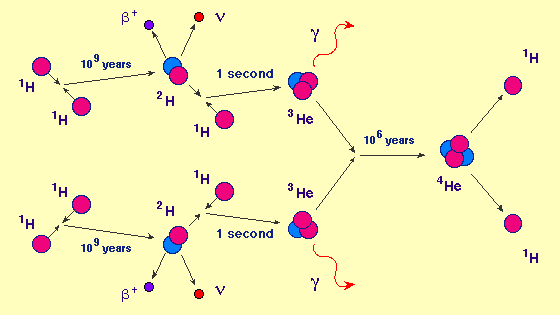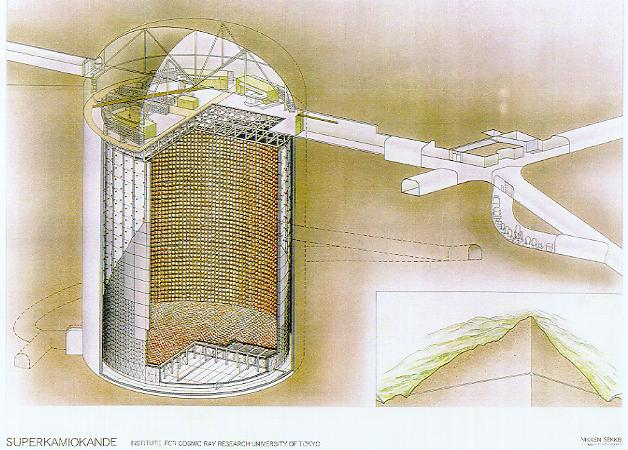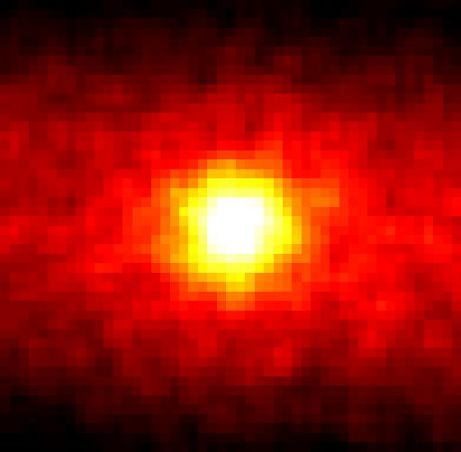As we described above, the Sun is constantly radiating energy into space. What is the ultimate source of this energy? The first theory, developed near the end of the 19th C by Lord Kelvin and a German physicist named Helmholtz, was that the Sun's energy must come from gravity. Their idea, called the Kelvin-Helmholtz contraction hypothesis, begins with the fact that the heat energy stored in the hot gases in the Sun's interior produces radiation, which slowly leaks out by radiative diffusion and convection. But that leakage of heat energy would cause the interior gas to lose pressure. Then, the outward force due to gas pressure would become less than the inward force of gravity, and so the Sun would begin to contract, compressing the interior gas. But compression causes gas to become hotter. This line of reasoning leads to the paradoxical but true result that when the Sun loses heat by radiation, it will actually get hotter.
When Kelvin and Helmholtz developed their contraction theory mathematically, they calculated that it would take about 20 million years for the Sun to collapse. At the beginning of the 20th C, this was the accepted theory for how the Sun produces its energy.
They were wrong! But I want you to read the full story as it was originally told. So, be sure to read highlights from The Internal Constitution of the Stars, by Sir Arthur S. Eddington -- one of the greatest scientific papers ever written.
Eddington's profound insight was to recognize the implications of the experiments of F. W. Aston, which showed that the helium atom weighed slightly less than four hydrogen atoms. He realized that if four hydrogen atoms could be converted into one helium atom, the missing mass might be converted into energy. According to Einstein's famous formula, E = mc2, this conversion could release enormous energy -- enough to replenish the heat of the Sun's interior hundreds of times over and keep it from contracting for billions of years. The amount of energy that is released per reaction is given by the famous curve of binding energy, shown below.
Eddington was right in every respect: the Sun's energy comes from fusion reactions that convert hydrogen into helium in the inner core of the Sun (the inner 25% of its radius). But, in 1920, when Eddington published his paper, nobody knew exactly how such reactions could work. It was another 30 years before Professor Hans Bethe of Cornell University finally explained the details of the nuclear reactions by which four hydrogen atoms are converted into helium in the Sun. The conversion actually takes place by a sequence of nuclear reactions, called the proton-proton chain, which is illustrated below.
 |
| Main branch of the proton-proton chain. Source: Energy Production in Stars. The little red dots denoted n represent neutrinos. The little blue dots denoted b+ represent positrons, and the curvy lines denoted g represent gamma rays. |
One interesting consequence of Bethe's theory is that about 5% of the energy produced by fusion of hydrogen into helium in the Sun's core escapes directly in the form of solar neutrinos. (The other 95% produces heat that ultimately escapes as radiation.) Neutrinos are remarkable subatomic particles that hardly interact at all with matter. As a result, they can pass right through the Sun, right through the Earth, and not be stopped or deflected at all. (In every second, approximately 1015 neutrinos pass through your body, without disturbing a single atom!) For the same reason, it is very difficult to detect neutrinos (they will pass right through an apparatus without leaving a trace). Despite these difficulties, scientists have built devices that can detect neutrinos from the Sun (see below).
 |
 |
| The SuperKamiokande neutrino detector is a huge (40 meters tall and 40 meters diameter) underground tank of water in Japan lined with more than 11,000 phototubes to detect flashes of light caused by the interaction of neutrinos with the atoms in the water. | This image of neutrinos from the Sun, taken by the SuperKamiokande detector. The actual source of neutrinos from the Sun has an angular diameter of less than 0.1o, but it is blurred to a bright yellow spot about 10o in diameter because of the poor angular resolution of the detector. |
When the scientists began to take measurements, they were surprised to find that the flux of neutrinos was somewhat less than half of the value predicted by the theory. For a long time, scientists were worried that there was something seriously wrong with our theory for the structure of the Sun's interior. But now we suspect that this discrepancy occurs because neutrinos can change into forms that are not detected by the experiments. You can see more details about the experimental results and their interpretation here. You can learn more details about energy generation in the Sun here: Energy Production in Stars. Finally, you should read this excellent summary of the whole story by John Bahcall: How the Sun Shines.
(Return
to course home page)
Last modified October 12, 2002
Copyright by Richard McCray